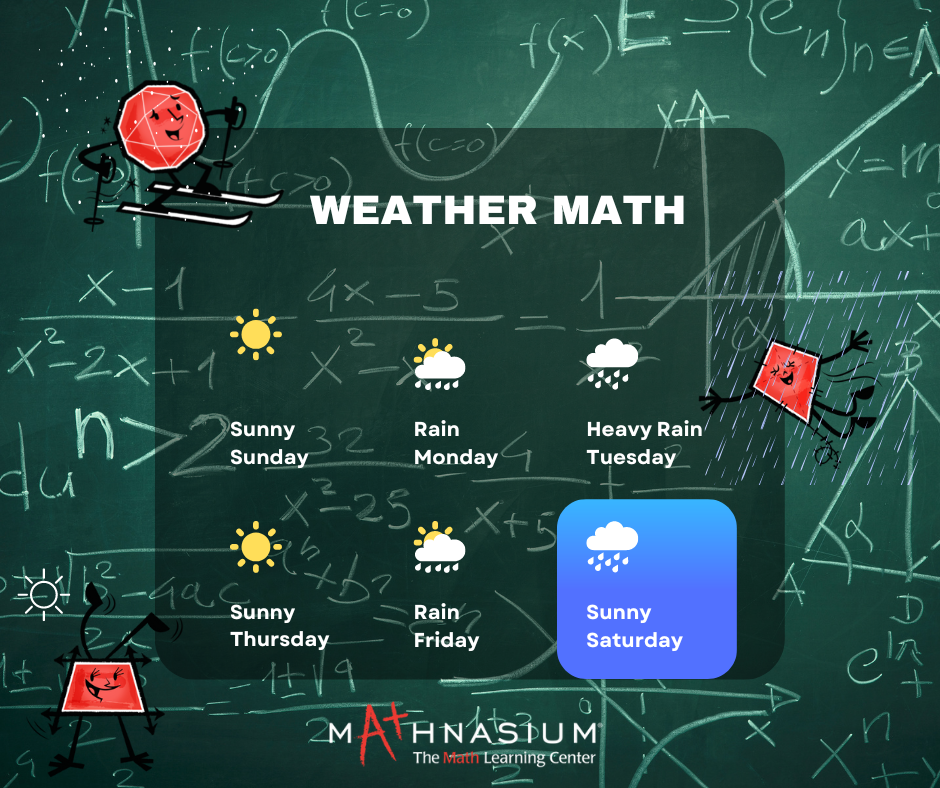The Mathematics of Waves
Want to see what an ocean wave looks like as a mathematical equation? y = Sin(x) Waves repeat themselves over a consistent period of time and distance, so it is possible to analyze their shape mathematically.

Every day, you use math from the moment you wake up until the moment you go to bed. It’s often said that math is the universal language. As we discover more and more about nature, we find that nature can be described mathematically. Mathematics plays a fundamental role in forecasting the weather. Numerical weather prediction uses mathematical models of the atmosphere and oceans to predict the weather based on current weather conditions.
Weather forecasting and the use of supercomputers
Since the advent of supercomputers, forecasting weather has become more accurate. They have made the job more precise, a lot quicker and are used extensively by the National Oceanic and Atmospheric Administration (NOAA) to predict near-perfect weather. The supercomputers are massive, each about the size of an average school bus, and can process approximately 2.8 quadrillion mathematical calculations every second around the clock. Here is how a supercomputer comes out with near-perfect weather predictions every time:
Thousands of earthly observations are collected every day by supercomputers, including air pressure, water levels, temperature, humidity, and wind speed. These observations are essentially represented by numbers. These computers plug the observations into a series of mathematical algorithms that signifies the atmosphere’s physical properties and predict the global weather. Mathematical forecasting of the future state of the atmosphere is called Numerical Weather Prediction because of its absolute reliance on computing these number-based algorithms for weather event forecasting.
Models for forecasting the weather and their operation
Human beings have attempted to predict local and global weather conditions since time immemorial. In the nineteenth century, however, informal weather predictions have been replaced by much more formal and accurate forecasts of atmospheric conditions. Here is a step-by-step guide on how modern weather forecasting models work:
Data collection: The data collection process has become much more accurate and detailed in modern times thanks to innovative devices, compressed monitoring networks, and modern communication systems. Surface weather observations and upper-air weather observations are two major parts of data collection. Surface weather observations can be taken manually by a trained weather observer and used to issue meteorological warnings. upper-air weather observations accumulate data such as humidity, temperature, and wind measurements.
Data assimilation and analysis: A numerical model is used to combine the data collected with the most recent predictions. The meteorological analysis uses this data to create a three-dimensional representation of temperature, wind, and moisture.
Numerical weather prediction: The most modern form of weather forecasting is used widely to produce accurate and reliable predictions. The most used weather data processing systems for the two categories of numerical models are: Global models – Some examples are Global the Forecast System (GFS), Global Environmental Multiscale Model (GEM), European Centre for Medium-Range Weather Forecasts (ECMWF), and others. Regional models – Some examples of regional models are The North American Mesoscale Model (NAM), the Weather Research and Forecasting (WRF) Model, the Advanced Region Prediction System (ARPS), and others. The use of complex math in weather forecasting has been instrumental in predicting good, bad, and worst-case weather scenarios all over the world. In the end, we can all thank technological advancements in numerical weather prediction models for the decision we make every single day about whether to carry an umbrella to work or not.
